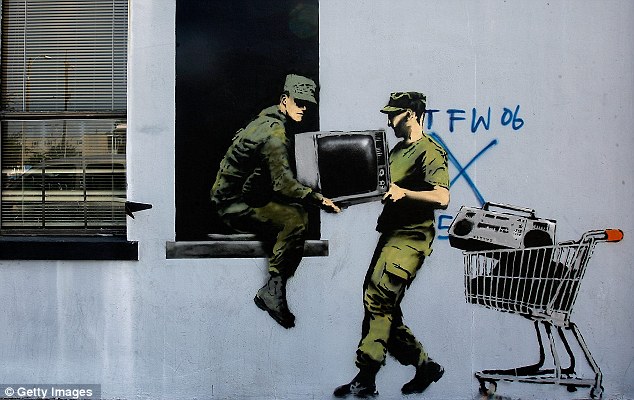Is it art or is it vandalism?
Everyone, from Reddit Users to The Straits Times, took a stab at answering this. In most cases, the debate couched art and vandalism as mutually exclusive concepts i.e. one or the other. Even the artist herself was quoted as saying that her work was “art and not vandalism”.
In my opinion, the question is moot. Priyageetha’s gold-foiled staircase is neither art nor vandalism, it’s both of those things.
I know. This sounds like a total cop-out, but allow me to explain.
—
The first, and most important thing which we need to understand is that, unlike art which is subjective, vandalism is a legal concept which is defined by a set of objective criteria.
This can be simply explained by looking at Singapore’s favourite Vandalism Act which defines acts of vandalism to include affixing paper on any private or public property without authorisation from the Government or without consent from the owner of the property. So, in defining vandalism in Singapore, all we really need to think about is whether the artist’s work falls within this definition.
Did Priyageetha seek permission from the Government to wrap the staircase with gold foil? No. Therefore, it’s vandalism.
If we are able to approach this issue from this perspective – that all street art is vandalism, we can then avoid making pointless value judgments which only serve to confuse us.
start evaluating the work’s artistic value as a standalone question, separate from that of vandalism, which is a legal one
In a recent article on The Straits Times concerning this issue, Mr Baey Yam Keng, Permanent Secretary of the Ministry of Culture, Community and Youth was quoted as saying that the artist “has good intentions” and that he doesn’t see this as a case of vandalism. In a separate article on the same issue, Alvin Tan, creative director of Phunk studio stated that “it’s a beautiful piece of art because the intent was to create art, and not to vandalise or destroy public property.”
While it sounds like a noble idea, using intention to distinguish an act of vandalism from art raises a lot of tricky questions.
For one, does this mean that an artist can never be guilty of vandalism as long as the work is good intentioned? How would one reconcile this with the Vandalism Act? Also, how would you define a good intention from a bad intention?
The whole point of a lot of art is to stir emotion and cause controversy, and this intention-based perspective seems to ignore that.
It would thus be a lot simpler if we just accepted that it was already vandalism in the first place, and that the government chose not to act because it did not cause any permanent damage.
The beauty with this pragmatic approach is that it then allows us to start evaluating the work’s artistic value as a standalone question, separate from that of vandalism, which is a legal one.
Take Banksy for instance, one of the most well-known street artists in the world. No one will deny that his works are illegal – the UK government have on quite a few occasions tried to remove his work from public property.
At the same time, the conversation surrounding his work centers mainly on its artistic value and not its legality – many would agree that his iconic murals, which often carry distinct socio-political statements, would qualify as art.

This is because unlike “regular art”, street art is something which is imposed upon us.
For example, residents of the 20th floor of Priyageetha’s HDB apartment would have no choice but to use the gold-foiled staircase on a daily basis. This is very different from viewing commissioned paintings in a gallery which we can choose not to visit.
So where street art is concerned, there will usually be strong reactions on both sides, and that’s the whole point.
For every gold-foiled staircase, there will be a sticker lady.
Back in 2012, Samantha Lo was arrested for spray painting the words “My Grandfather Road” on Maxwell Road and Robinson Road in Singapore. Pedestrians and road users had no choice but to be confronted by her work every time they crossed the street. Her work was clearly more provocative than Priyageetha’s, and probably pissed more people off.
But can we really say that, because of the negative reaction, her work isn’t art?
In the same way, while some critics have called the gold-foiled staircase as the “most affecting artwork” experienced this year, there will be others who will complain about the potential dangers of slipping on the foil, and the trouble of cleaning it up later. There will also be others who simply do not like the look of gold.
Where art is concerned, we thus need to take in the good and the bad. A negative reaction, is still a reaction, and in a way, that has artistic value as well.
The sooner we realise this, the faster we can then move on from trying to answer moot questions such as “Is this good or bad art?”, or “is this vandalism or art?”, and focus on what’s fundamentally more important such as “What does this piece of art mean to you?”






